I think it is safe to say that the majority of people using Lightroom Classic (LrC) have access to Adobe Bridge as well. After all, if you have the Creative Cloud Photography plan subscription to get access to Photoshop and LrC, then you get Bridge as part of the deal. Now, the safe advice to all new LrC users is to simply not ever use Bridge, and it is true that not using Bridge will help avoid the self-inflicted injury that can come from moving folders and photos around outside of LrC. However, I think that it is possible to be made aware of the potential pitfalls of using Bridge and LrC so that you can avoid them while also adding another useful tool to your photographic toolbox. This makes you smarter, gives you more options for managing your files, and helps you maximize the value of your Creative Cloud subscription plan.
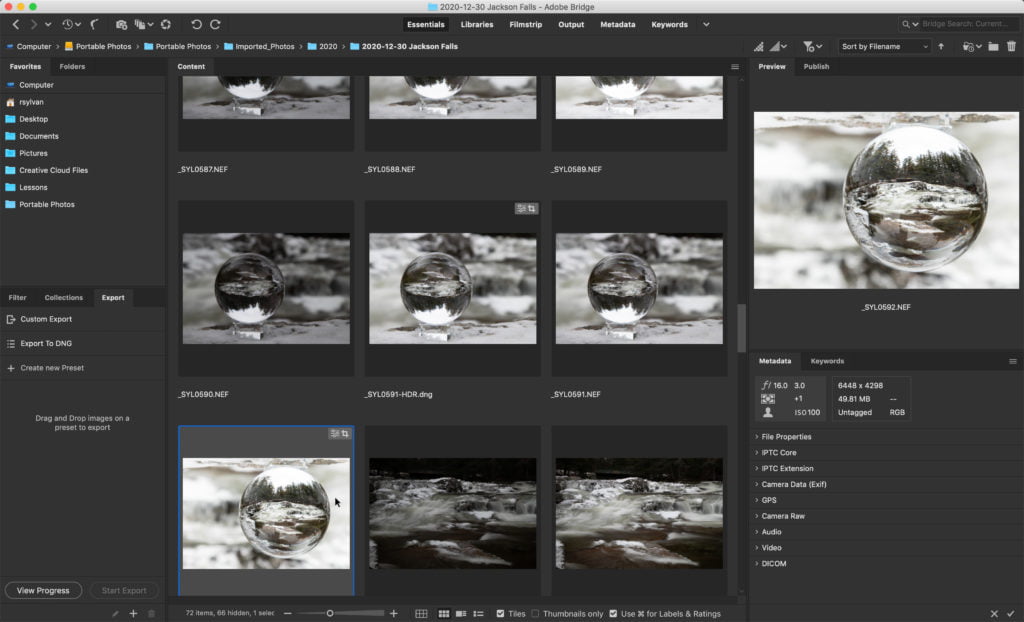
What is Bridge?
Adobe Bridge is simply a file browser just like Finder on a Mac or File Explorer on Windows. That said, because it is Adobe’s file browser it is designed to be able to correctly display and handle all of the variety of media files creative people might have on their machines. If you’ve ever looked at a folder of raw files, PDFs, videos, PSDs, etc., with your operating system’s file browser and only seen icons instead of thumbnails depicting each file’s contents, then you’ve experienced the limitations of that file browser. Adobe Bridge is designed to be “the bridge” between all of Adobe’s various multi-media software tools, so it has to be able to handle all of those various file types correctly.
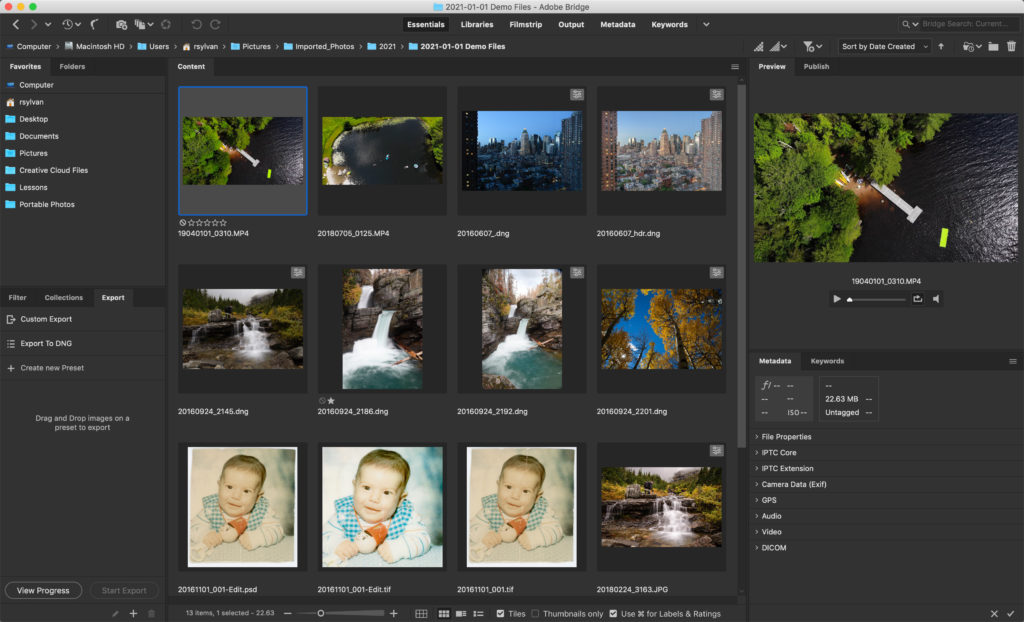
Furthermore, because it is Adobe’s own software it is well integrated into products like Photoshop, illustrator, Premiere Pro, and so on, which can facilitate certain tasks with those products. That said, it is not (necessarily) integrated with LrC, so don’t go looking for an “open in Lightroom Classic” menu in Bridge.
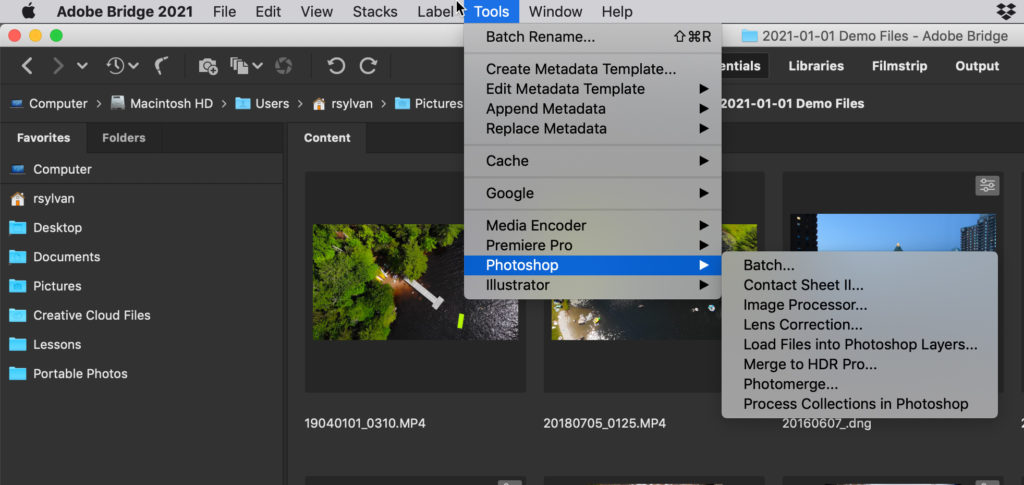
File browsers of all types mentioned here serve two broad purposes. One purpose is a tool for viewing the contents of folders on your system. As a file viewer, Bridge supports and more accurately displays more file types than the built-in file browsers do, so that’s a plus for LrC users. The second purpose of a file browser is to facilitate the management those various files on your system by giving you the ability to move, rename, and delete files, as well as move, rename, and delete the folders that contain those files. This is the danger zone for LrC users, and the root of why most people advise simply not using Bridge at all (ok, and some people just hate Bridge, so there’s that).
Avoiding the Pitfalls
The key to avoiding the self-inflicted injuries that can come from managing your files outside of LrC is understanding that during the import into LrC the exact path to each photo, from the volume name (PC: drive letter) down to the individual file name, and every folder in between, is what is stored in the LrC catalog file. If an imported photo is moved, renamed, or deleted outside of LrC using any file browser (not just Bridge) then the path stored in the LrC catalog is no longer valid, and that is what creates the problem. It is a fixable problem (see my article called, When Photos Go Missing), but is a problem that is best avoided by only using LrC to move, rename, and delete files and folders that have been through the import process.
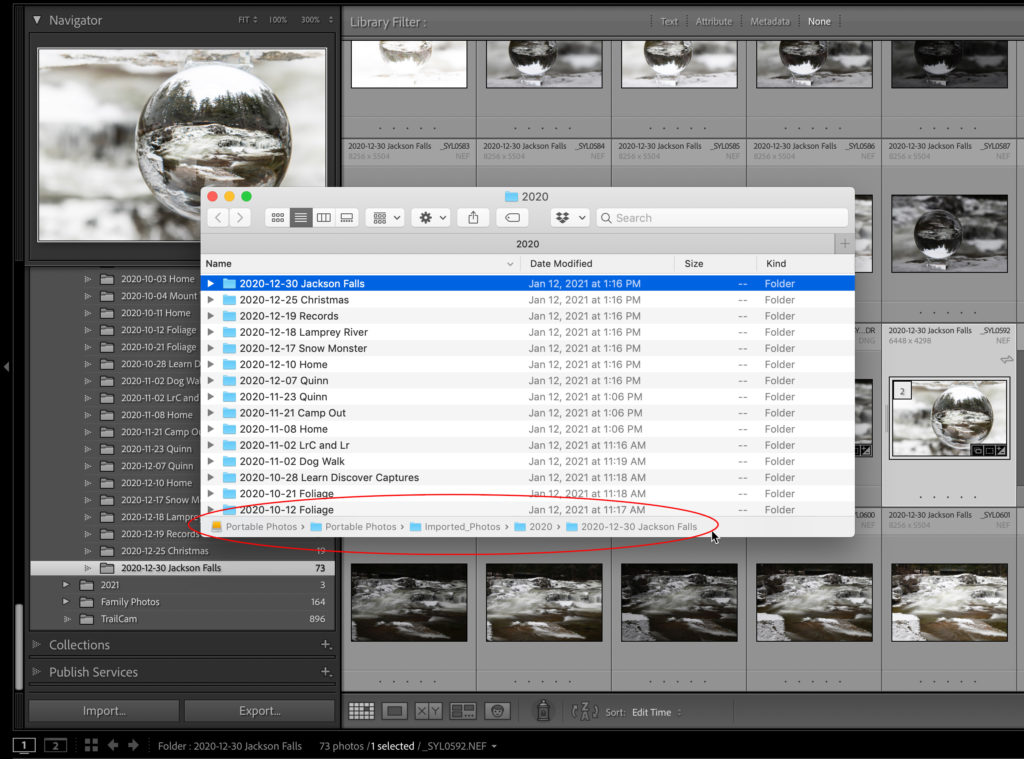
That said, you can use Bridge to view the contents of folders managed by LrC without any problem at all, and this can be useful. Additionally, you can use Bridge to move, rename, and delete files that have not been through the import process into LrC, which is also very useful. If you’ve ever been asked for help by a friend or family member while being handed a hard drive/DVD/thumb drive with all kinds of image files on it, then being able to open, view, and evaluate those files with Bridge can be more useful than importing the lot into a LrC catalog or using the limited powers of another file browser.
Similarly, if you are in need of organizing a drive full of old photos before importing into LrC, then it might be useful to use Bridge to get those files organized into a logical folder structure, while weeding out the unwanted files. This gives you the ability to view all supported raw file formats as well as the contents of TIF and PSD files (with easy trips into Photoshop if closer inspection is required), delete at will, as well as move, rename, and create additional folders. Many people are just more comfortable doing a big job like that in a file browser. Once you’ve got it organized to your liking, and have deleted all of the unwanted material, then you can import into LrC using the Add option to maintain the existing file structure, and from that point on, only use LrC for those file management tasks.
Using Bridge and LrC Together?
If you do have need to view the contents of a folder that has been imported into LrC, then there are a few things to keep in mind beyond the don’t move, rename, or delete anything in Bridge, advice. First, because LrC only stores edits in LrC as a set of instructions within its own catalog file by default you won’t see those edits reflected in Bridge. This can be confusing, but is easily corrected. In order for edits made in LrC to be viewable in Bridge you need to instruct LrC to write those changes to the photo’s own metadata. You can do this manually by selecting the photos in Grid view of LrC first, then using the Metadata > Save Metadata to File command or by pressing CMD+S (PC: Ctrl+S). For raw files, a sidecar XMP file containing the LrC edits will be created in the folder, which makes those edits viewable in Bridge (and Camera Raw). For supported non-raw photos and DNG files, LrC writes directly to the photo’s own metadata. Aside from Develop module edits, any keywords, star ratings, or color labels applied in LrC will also become visible in Bridge.
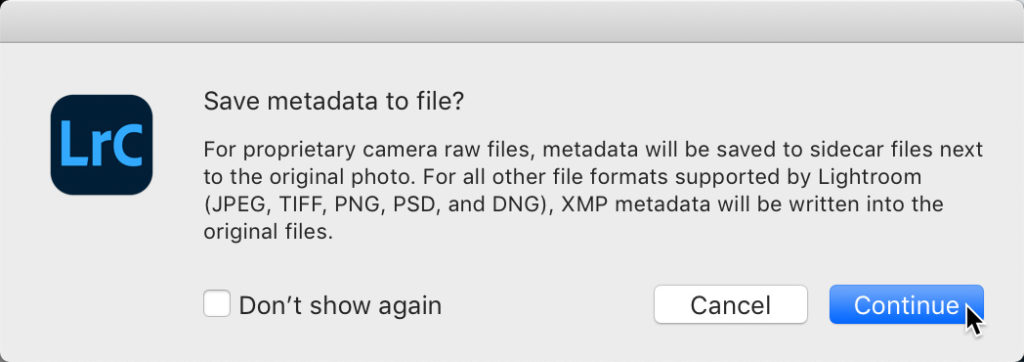
You can also configure LrC to automatically write all changes to each photo’s metadata (in addition to its own catalog of course), by going to Lightroom Classic > Catalog Settings > Metadata (PC: Edit > Catalog Settings > Metadata), and checking the box to Automatically write changes into XMP. Note, this is unchecked by default because it can be resource intensive. If you have a large catalog and you enable that setting, then be prepared for LrC to be busy for a while as it goes through the process of writing to every imported photo, and that can slow down your experience while it is happening. Once it has gone through and written to all photos, you most likely won’t notice it doing this as you work from that point forward, but your mileage may vary. The manual process I outlined previously may work better for those instances when you need it for a given folder. In other words, don’t just go checking that box without thinking through the consequences.
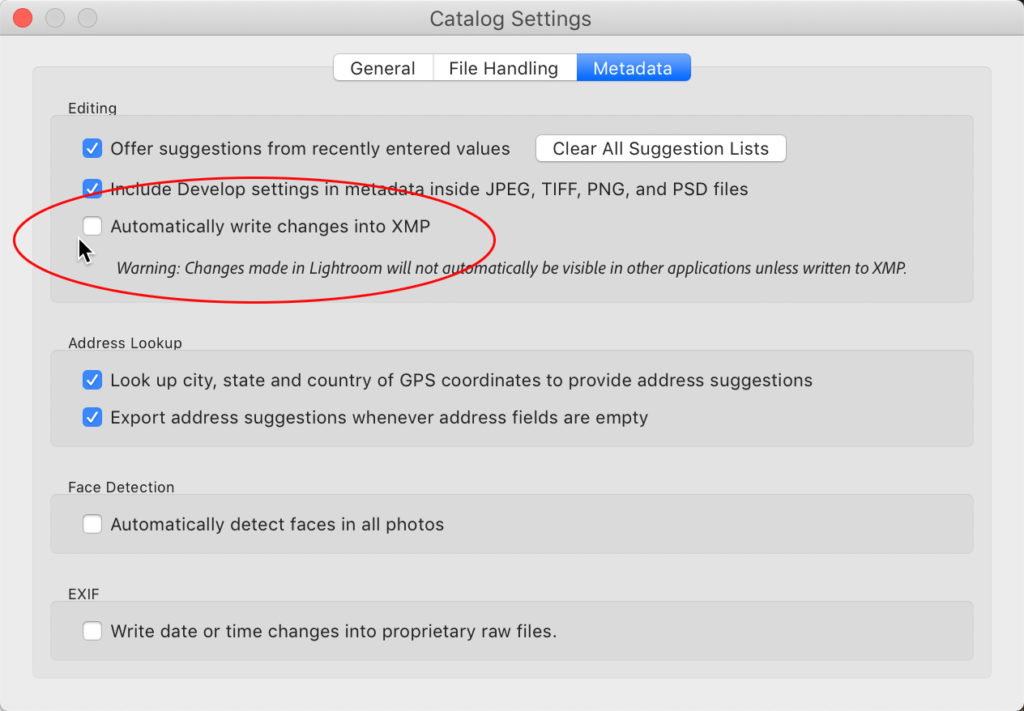
Note, there are a few things, like virtual copies and flags in LrC that cannot be written to XMP metadata, so don’t look for those in Bridge.
Closing Thoughts
I hope you can see that as long as you are aware of the potential problems that can arise if you use Bridge to move, rename, or delete photos being managed by LrC (and avoid them), then you can safely use Bridge in a number of ways to help you with your photo library. This is not to say that you must use Bridge (because you don’t ever have to use it if you don’t want to), but you don’t have to fear it, and it might just be the thing you need for certain situations (and you’re likely already paying for it).
[Editors note, this originally appeared in the February issue of Photoshop User magazine]The post Adobe Bridge for Lightroom Classic People appeared first on Lightroom Killer Tips.
